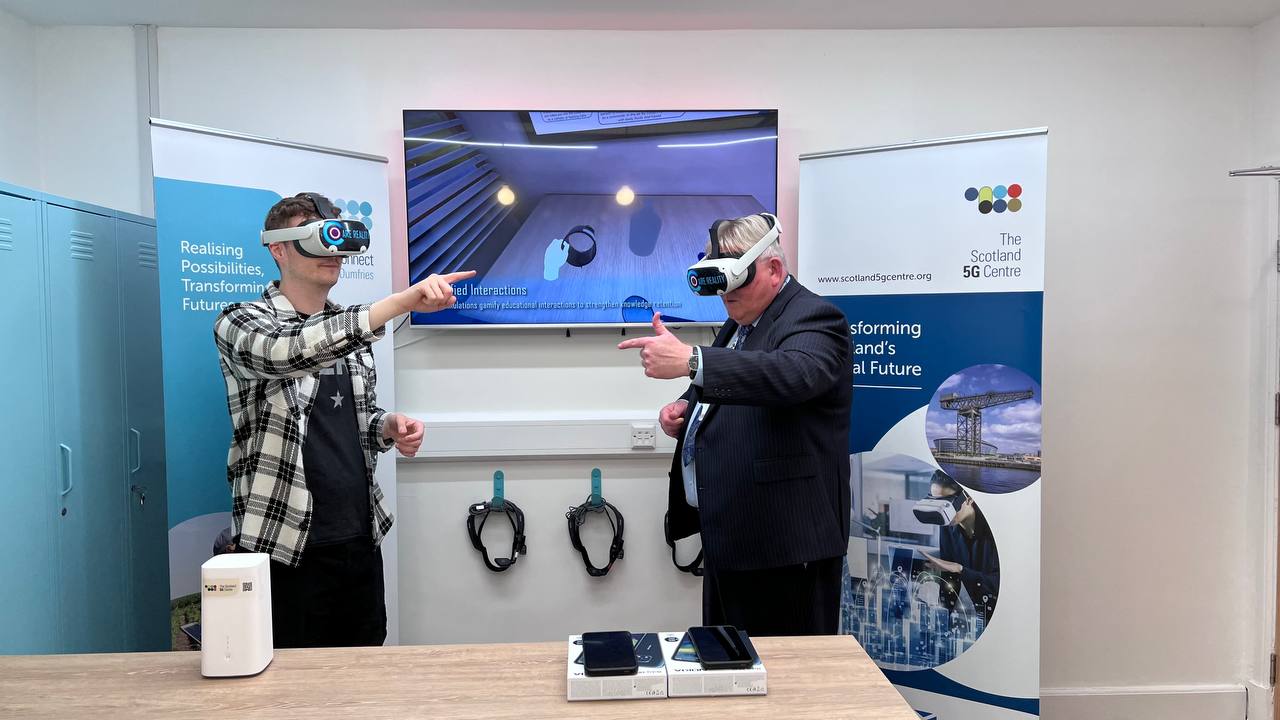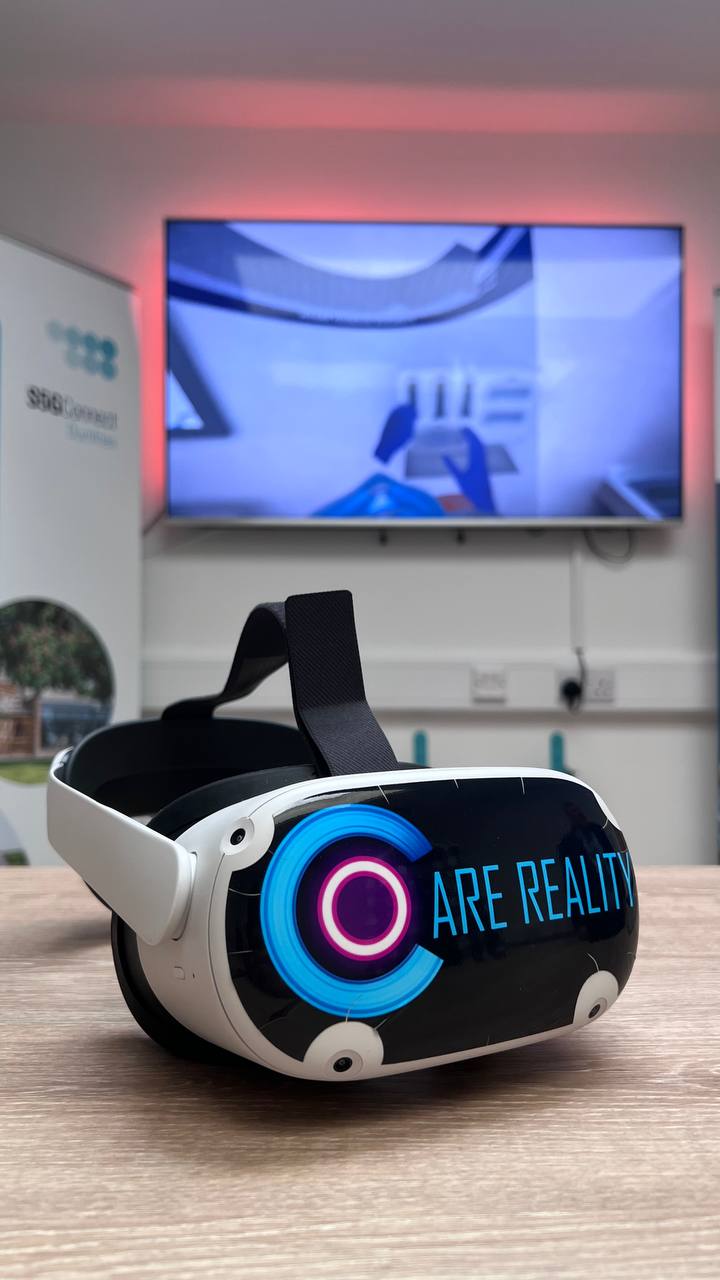5G-enabled Testing at our innovation hubs: Care Reality
Care Reality, one of the winners of The Scotland 5G Centre’s inaugural innovation challenge ‘Shaping Digital Health & Social Care’ has returned to our S5GConnect Dumfries hub to conduct latency testing of their most recent project over our Private 5G network.
Care Reality is an innovative Scottish EdTech software company that designs and builds immersive learning experiences through virtual reality (VR). Emerging from the Scottish Governments CivTech 6 Accelerator programme in 2022, Care Reality are dedicated solely to the health and care sector, providing a learning platform tailored for community health settings and residential care homes.
Learners are fully immersed within a dynamic 3D environment, navigating interactive scenarios and lifelike situations that enhance their knowledge, confidence and skills through experiential learning.
Using virtual reality headsets and their bespoke software platform, Care Reality is exploring the benefits of 5G for their ongoing projects, including R&D project: ‘Virtual Choirs in Care Homes: A networked XR therapeutic singing intervention to improve mental health’.
We spoke to Jake Spreadborough, Lead Developer at Care Reality about the company’s latest project and testing at the Dumfries hub.
What benefits are you seeing as a result of participating in the S5GC Innovation challenge last year?
Following the S5GC Innovation challenge, Care Reality has seen increased engagement in Dumfries and Galloway within both the health and social care and higher education sectors.
What’s the main focus of this testing?
With this testing, we are exploring the potential applications of 5G networks and its benefits in regard to further iterations and developments of our project. Over time, we would like to increase the integration of networked features in the Virtual Choirs project to further extend its use cases and potential user base.
We wish to achieve a latency and download that gives users a totally harmonious experience with the other fellow choir singers – so there is no noticeable delay or lag, and it gives the user the experience of being with the other members of the choir and singing live in a choir as if at the same location.
How does the headset work?
Users will be placed into the headset, and all control will be carried out by a ‘Leader’, who loads up singing experiences for all participants. The leader will be able to communicate directly with each user, to ensure comfort. We also have safeguarding systems implemented to ensure that each user is safe and is able to exit the experience whenever they want to.
How will this technology benefit people living with dementia?
Generally, we expect this technology to build on the evidenced therapeutic benefits that singing can bring for people living with dementia and carers, and their mental health and wellbeing. The group choir experience aims to create a sense of presence within the immersive VR scene to recreate the sense of belonging, shared purpose and co-creation that are known to contribute to the social connectedness of choir singing.
What are the benefits of having facilities such as the Dumfries hub, accessible for organisations in the south of Scotland?
The Dumfries hub is an excellent facility for use-case testing and for on-site testing, and Care Reality has utilised this multiple times since completing the S5GC Innovation challenge. It also offers a great co-working space that provides a nice way for an otherwise remote company to meet up and work together on our projects.


